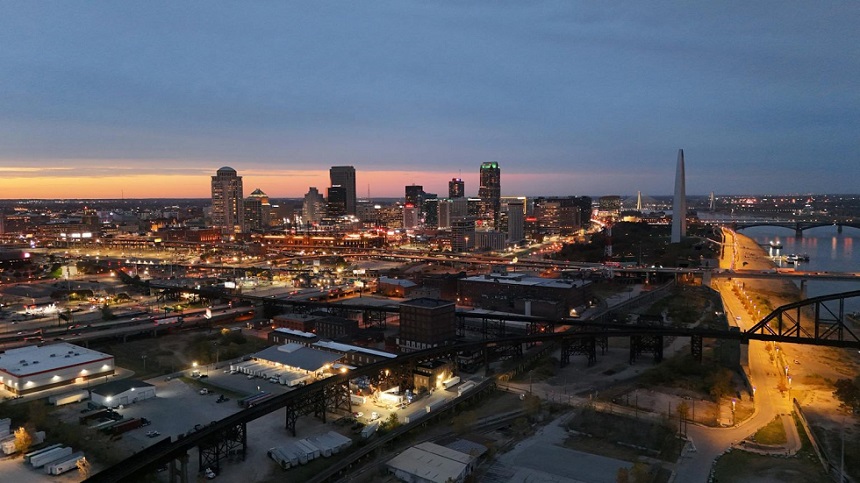Adequate lighting is a crucial aspect of public safety. Proper street and public space lighting in St. Louis prevents falls, especially at night. An attorney for slip and fall cases discusses these dynamics.
The Importance Of Adequate Lighting
Lighting significantly affects safety and the perception of safety in any urban environment. Well-lit areas are less prone to accidents and crime, providing residents with security. In St. Louis, adequate lighting is essential in reducing nighttime falls and ensuring pedestrian safety.
Poorly lit streets and public spaces can obscure hazards like uneven pavement, debris, or sudden elevation changes. These obstacles are more challenging to spot in the dark, increasing the risk of tripping and falling. Ensuring sufficient lighting in these areas can dramatically reduce the frequency of such incidents.
Beyond physical safety, lighting influences how welcoming and accessible public spaces feel. Well-illuminated areas encourage walking and outdoor activities, promoting a vibrant community life. Conversely, dimly lit areas may deter people from using public spaces, limiting community interaction.
Impact Of Lighting On Fall Frequency
The correlation between lighting and fall frequency is well-documented. Inadequate lighting can increase fall risks, particularly for vulnerable populations such as the elderly or impaired vision. These groups are more reliant on visual cues to navigate their environment safely.
In St. Louis, improving public space lighting has positively reduced fall-related accidents. By identifying poorly lit areas and prioritizing lighting upgrades, the city can create safer environments for all residents. This proactive approach helps prevent injuries and enhances the overall quality of life.
Street lighting improvements can also have a broader impact on community safety. Better visibility reduces the likelihood of accidents involving vehicles and pedestrians, contributing to a safer urban environment. Additionally, well-lit areas can deter criminal activity, further enhancing public safety.
Legal Implications Of Lighting Deficiencies
Lighting deficiencies can have significant legal implications, particularly when they contribute to slip and fall accidents. Property owners and municipalities are responsible for maintaining safe environments, and inadequate lighting may be considered negligence if it leads to an accident.
Determining liability can be complex when a fall occurs due to poor lighting. It often involves assessing whether the property owner or municipality was aware of the lighting issue and whether they took reasonable steps to address it. Legal cases may involve examining maintenance records, witness testimonies, and expert evaluations of the lighting conditions.
Pursuing legal action for victims of falls caused by lighting deficiencies can provide compensation for medical expenses, lost wages, and other damages. However, these cases can be challenging to prove, requiring thorough documentation and legal expertise. This underscores the importance of consulting with knowledgeable legal professionals when considering an attorney for slip and fall cases.
Community Efforts To Improve Lighting
Community involvement is crucial in advocating for better lighting in St. Louis. Residents can report poorly lit areas to local authorities and participate in initiatives to enhance public safety. Community members and city officials collaborate to ensure lighting improvements reflect local needs.
Neighborhood associations often organize assessments to identify lighting deficiencies and prioritize areas for upgrades. These assessments involve community members walking through neighborhoods to evaluate existing lighting conditions and recommend improvements.
Public meetings and forums allow residents to voice their concerns and collaborate with city planners and utility companies. These discussions can lead to actionable plans for upgrading streetlights, installing additional fixtures, and implementing energy-efficient lighting solutions.
Innovative Lighting Solutions And Future Directions
Advancements in lighting technology offer new opportunities to enhance safety and sustainability in public spaces. Energy-efficient LED streetlights, for instance, provide brighter illumination while reducing energy consumption and maintenance costs. St. Louis is exploring these solutions to improve nighttime visibility and safety.
Smart lighting systems with sensors can adjust brightness based on ambient light and pedestrian activity, optimizing energy use while maintaining safety. These systems also offer remote monitoring capabilities, enabling quick identification and repair of lighting issues.
Looking ahead, St. Louis aims to expand its lighting initiatives by integrating innovative solutions and fostering partnerships with technology providers and urban planners. These efforts will contribute to safer and more welcoming public spaces, benefiting all residents.
Conclusion
Lighting is pivotal in preventing nighttime falls and enhancing public safety in St. Louis. Understanding the impact of lighting deficiencies is crucial for addressing safety concerns. The attorney for slip-and-fall cases says by prioritizing lighting improvements, St. Louis can create safer, more accessible communities for everyone.

